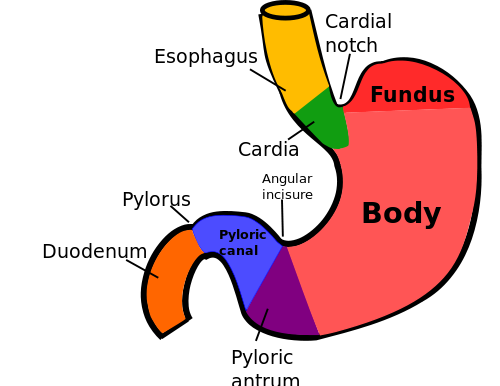The food that we eat has a long journey through a convoluted tube that we refer to as the digestive tract. Each section of the digestive tract has specific functions. When one part is affected, it can have a perpetuating effect on other parts of the tract. The digestive tract like any part of the body is prone to a host of conditions. If any of these conditions impede movement of food through the tract then it can become backed up and give rise to unusual sensations like a stuck stomach.
What does stuck stomach mean?
We often explain symptoms that we do understand in lay terms that have little to no medical significance. One of these colloquial terms is a ‘stuck stomach’ or as if somethings feels like it is ‘stuck in the stomach’. The latter is often associated with a meal in that there is the sensation that the food is stuck in the stomach. These sensations may not be caused by any underlying medical condition. This does not mean that it is imaginary but rather than the perception of something being stuck in the stomach is incorrect.
However, there are times where food and fluid can become obstructed in the stomach or even the stomach itself can become strangulated. In the early stages there may only be some vague symptoms but with time it can become severe. The two most notable conditions in this regard is a hiatal hernia and gastroparesis leading to delayed gastric emptying. Understanding what causes these conditions will help in making sense of strange sensations like there is something stuck in the stomach.
Causes
The esophagus runs down from the throat, across the chest cavity and into the abdominal cavity where it joins the stomach. The diaphragm separates the chest and abdominal cavities and the esophagus passes through a small opening in the diaphragm known as the esophageal hiatus. Food is churned in the stomach where it is mechanically broken down and chemically digested by the strong gastric acid and stomach enzymes. Eventually a semi-liquid mixture known as gastric chyme is pumped out through the pylorus of the stomach into the duodenum of the small intestine. This ensures that food which enters the stomach is processed and expelled in an orderly manner to facilitate digestion.

Hiatal Hernia
A hiatal hernia is a condition where the upper portion of the stomach become stuck in the esophageal hiatus. Normally this hiatus in the diaphragm is small and tight to ensure that only the esophagus can pass through. However, in a hiatal hernia the opening allows for the upper portion of the stomach to push through. The affected portion of the stomach becomes stuck and squeezed in the hiatus for short periods of time until it releases and slips back down into the abdominal cavity.
Causes
- Enlarged esophageal hiatus from birth.
- Injury to the diaphragm.
- Repeated pressure with coughing, vomiting, when lifting heavy objects or straining during bowel movements.
Symptoms
- Difficulty swallowing
- Heartburn
- Belching
- Feeling full after small meals
- Vomiting (sometimes bloody vomit)
- Abdominal or chest pain
Gastroparesis
Gastroparesis is a condition where the stomach does not empty properly because the muscles that control movement through the stomach do not function as it should. Often the problem lies with the nerves that control these muscles. It is the vagus nerve that controls these muscles and it can malfunction for several reasons. Food may remain in the stomach for longer than normal. It can even become backed up and food can push up into the esophagus.
Causes
The cause of gastroparesis is not always known as is therefore referred to as idiopathic gastroparesis. Some of the known causes include:
- Damage during surgery
- Diabetes mellitus (diabetic neuropathy)
- Medication like narcotic painkillers and certain antidepressants
- Parkinson’s disease
- Rare conditions like scleroderma and amyloidosis
Symptoms
- Nausea and vomiting
- Feeling of fullness
- Changes in appetite
- Abdominal bloating
- Abdominal pain
Foreign Body
A foreign body in the stomach is any non-edible object in the stomach that was swallowed either intentionally or accidentally. It most often seen in young children. Sometimes the object can become lodged in the esophagus and not enter the stomach. However, it is possible that the object enters the stomach but cannot exit because it becomes lodged in the pylorus of the stomach. The symptoms are largely the same as gastroparesis. Another condition that is mainly seen in infants is pyloric stenosis which also presents in a similar way to gastroparesis.
Surgery:
Surgical procedures to treat a stomach hernia are reserved for severe cases that are unresponsive to lifestyle changes and medication. It is also indicated for cases where there are complications of the stomach hernia and in particular the acid reflux associated with it. These surgical procedures include Nissen fundoplication and laparoscopic paraesophageal hernia repair.
Nissen fundoplication where a portion of the upper stomach (fundus) is wrapped around the lower end of the esophagus. It is the procedure of choice in most stomach hernia cases and can be done as a laparoscopic procedure. This procedure is also used for gastroesophageal reflux disease (GERD).
Laparoscopic paraesophageal hernia repair is done by the means of a synthetic mesh to secure the area after removing the hernia sac from the thoracic cavity

Post a comment